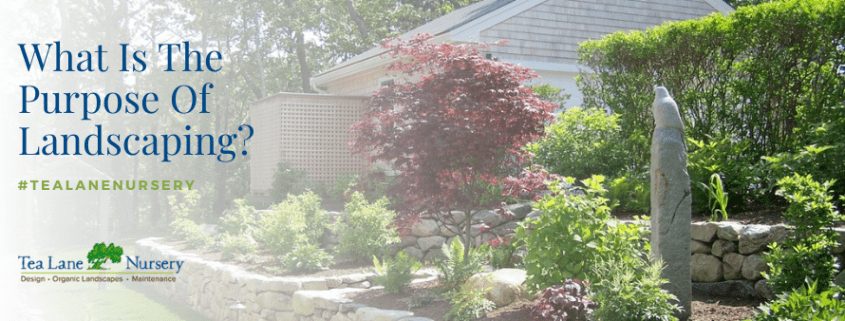What Is The Purpose of Landscaping?
One of the most important driving forces behind good landscaping is that it promotes a marriage between all the physical features of your residence, with the natural features of the surroundings. For landscaping professionals like those at Tea Lane Nursery, this can be a challenge, but being aware of the underlying objective makes it somewhat more achievable. Those homeowners who lack this understanding are operating on pure instinct and what looks and feels right to them.
This is not to say that the average homeowner doesn’t achieve some sparkling successes with landscaping – many do, in fact. Really good landscaping isn’t just about choosing big, beautiful plants which are colorful and attractive, because it also involves incorporating the elements of your household into the total setting provided by nature. For instance, landscaping can make your walkway, your pool, or your shed seem like part of the environment, while still showing off their own distinctive features and benefits. Here’s how to go about using good landscape design.
Consider the surroundings
The first thing you need to do is to identify all those features about your environment which will have an impact on your landscape design. Anything in the way of fences, pools, decks, porches, outbuildings, walkways, and even bodies of water should be noted. Next, consider how much sunlight the entire area receives, and at what time of day the sun strikes those areas.
This will be important for choosing the kinds of plants you want to install around the home. Another factor which will impact your plant selection is the type of soil which prevails around your residence. It might be primarily sandy or have a higher clay content, and it might retain water well or it might drain off well, and this will be important for your plant life.
Lastly, consider exactly which kinds of activities you expect to carry out in each of the areas you intend to landscape. For instance, will you be inviting friends over for gatherings at the deck in your backyard? Will there be very few activities in your front yard, other than gardening and mowing the lawn? You’ll need to know how much traffic will be affecting each of the areas you’re working with, and how active that traffic will be.
Points to keep in mind
Given the fact that there should be a flow to the outdoor scenery just as there is to your interior decor, you should attempt to incorporate that flow into the landscape design, in order to create a harmonious relationship between dwelling and land. Your finished landscape design should be pleasing to look at from any point of view inside your home, and from outdoors as well.
To accomplish this, incorporate the principles of unity, simplicity, and proportion. One trick to remember is to try and install several focal points in your landscape design, because these will draw the attention of the viewer toward features you wish to emphasize. You can also be very creative while carrying out the marriage between house and environment, choosing plants which thrive in your climate and your specific sun/moisture setting.
When developing your landscape design, you can consciously choose to favor one element over the other – more natural, or more house-centered. Current trends are in the direction of allowing nature the upper hand, but that doesn’t mean nature needs to dominate your home and push it to the background. If you wish to strike a perfect balance between dwelling and nature, that may be the easiest arrangement to achieve, because neither component will appear to have precedence.
The final product
Ultimately, the landscaping arrangement you come up with should be something which is pleasing to your eye, and which others find appealing as well. Many homeowners spend the most time on developing their front yard landscape plan, because it’s the area which is most visible to the public, and it says the most about the personality of the designer.
If this is true in your case as well, make sure that your front yard design makes good use of whatever features might be visible, like your walkway, your garden, a strategically placed boulder, or even your mailbox. Assemble a collection of plants which complements your house, and which are colorful and attractive in a way that flatters your premises.







